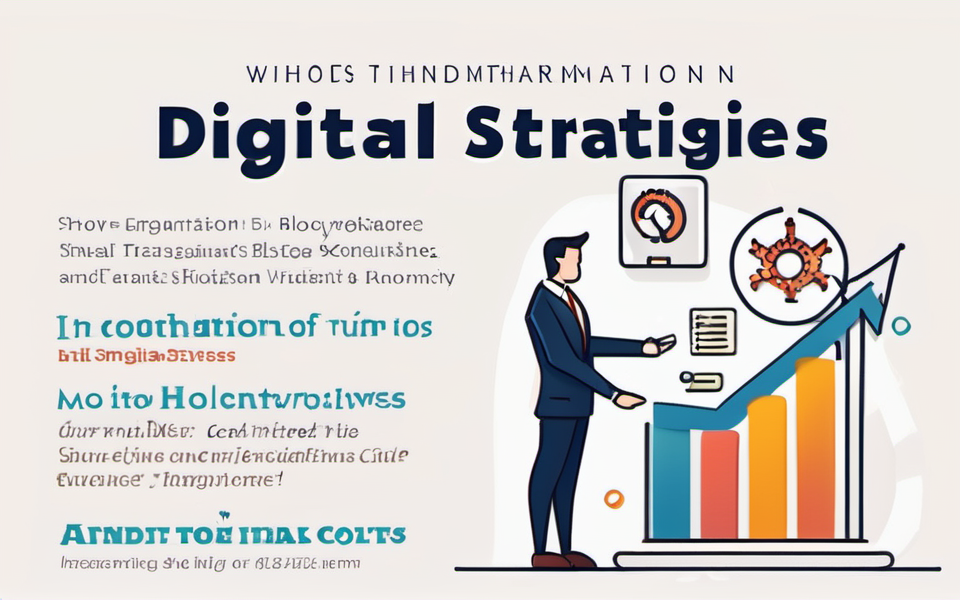Uncover the secrets smart small businesses are using to grow faster, work smarter, and shine brighter in today’s digital world.
What is Digital Transformation?
In simple terms, digital transformation is the way businesses use technology to improve how they work and serve their customers. Imagine if you could have a magic wand that makes everything in your business run smoother—well, that’s what digital transformation aims to do. It’s all about using new digital tools and methods to change the way a business operates.
Many people think digital transformation is just about technology, but it’s more about changing mindsets and approaches. It means adopting new ways to solve old problems. For example, instead of manually tracking inventory with paper and pen, you use software that does it for you. This isn’t just more efficient; it’s smarter.
Small businesses especially benefit from digital transformation because it levels the playing field. With the right tools, a small player can compete with much larger ones. It’s like giving your business superpowers. But it’s not just about buying the latest tech; it’s about using it in the right way.
Identifying the Right Tools
Picking the right tools can be a game-changer for your business. The first step is to assess what you truly need. Do you need better ways to communicate with your team? Or perhaps a more effective way to manage customer relationships? Once you know what you need, you can start looking for the right tools.
There are countless digital tools out there, but not all of them will be suitable for your business. For example, tools like Slack and Microsoft Teams can be fantastic for improving team communication. If your focus is on customer relationship management, solutions like HubSpot or Zoho CRM can make a difference.
Don’t fall into the trap of thinking you need the most expensive tool. Sometimes, simpler and more affordable options work better. Many powerful tools offer free versions, or trial periods—take advantage of these to see what fits your needs the best. Test the waters before you dive in.
Training Your Team
Introducing new technology can be met with resistance if your team isn’t on board. Training is crucial. The best tools in the world won’t help if your team doesn’t know how to use them. So, once you’ve picked your tools, make sure everyone knows how to use them properly.
Start with simple, easy-to-follow instructions. Many tools come with user guides or videos that can help. Schedule regular training sessions and encourage your team to ask questions. This can be done in person or through online workshops.
Remember, the goal is not just to teach them how to use the tools, but also to show them how these tools can make their jobs easier. Demonstrating real-life benefits can turn skeptics into believers. With the right training, your team will feel more confident and capable, which in turn will help your business thrive.
Improving Customer Experience
Customer experience is everything in today’s market. Digital transformation can significantly enhance how customers interact with your business. Think about it—when was the last time you were happy with slow, inefficient service? Chances are, not recently.
Start by figuring out what your customers need and want. Use tools like surveys and feedback forms to gather this information. Customer relationship management systems can also help you keep track of interactions and preferences. This enables you to tailor your approach, providing a more personalized experience.
Chatbots, for instance, can answer common questions around the clock, providing instant support. An updated, user-friendly website and active social media presence also play a critical role. The easier you make it for customers to find information and interact with you, the happier they will be.
Staying Agile
The business world is always changing, and one of the biggest advantages of digital transformation is that it helps you stay flexible. Being agile means being able to quickly adapt to new conditions, whether it’s a change in customer preferences or a new market trend.
Agility is not just about speed; it’s also about being proactive. Use data analytics to gain insights into what’s happening in your industry. This helps you anticipate changes and prepare for them. Tools like Google Analytics or more advanced solutions like Tableau can provide valuable data that guides your decision-making.
Also, encourage a culture of continuous improvement in your team. Regularly review what’s working and what isn’t. This will help you make necessary adjustments and stay ahead of the curve. Remember, digital transformation is a journey, not a destination.
The Importance of Cybersecurity
With great digital power comes great responsibility. While technology can bring many benefits, it also opens the door to new risks. Cybersecurity is a critical aspect of digital transformation, especially for small businesses that may not have extensive resources.
Start by educating your staff about cyber threats like phishing and malware. It’s crucial that everyone in your organization understands the basics of online safety. Use strong passwords and enable two-factor authentication wherever possible.
Invest in good cybersecurity tools. Antivirus software, firewalls, and regular system updates can go a long way in protecting your data. If your budget allows, consider consulting with a cybersecurity expert to identify potential vulnerabilities. The costs of a data breach can be much higher than preventive measures.
Embracing a Digital Culture
Ultimately, digital transformation goes beyond technology. It’s about fostering a culture that embraces change and innovation. Everyone in your organization should be encouraged to think digitally, from the top down




